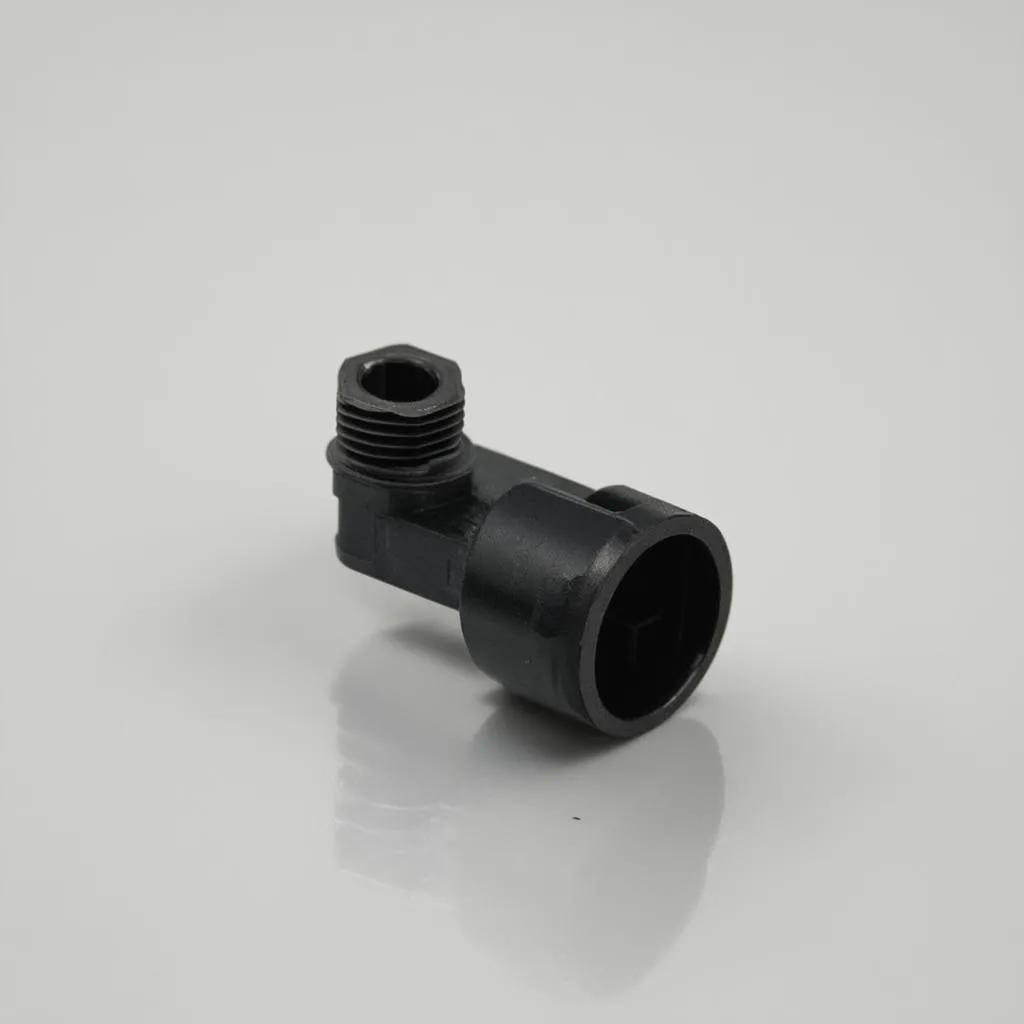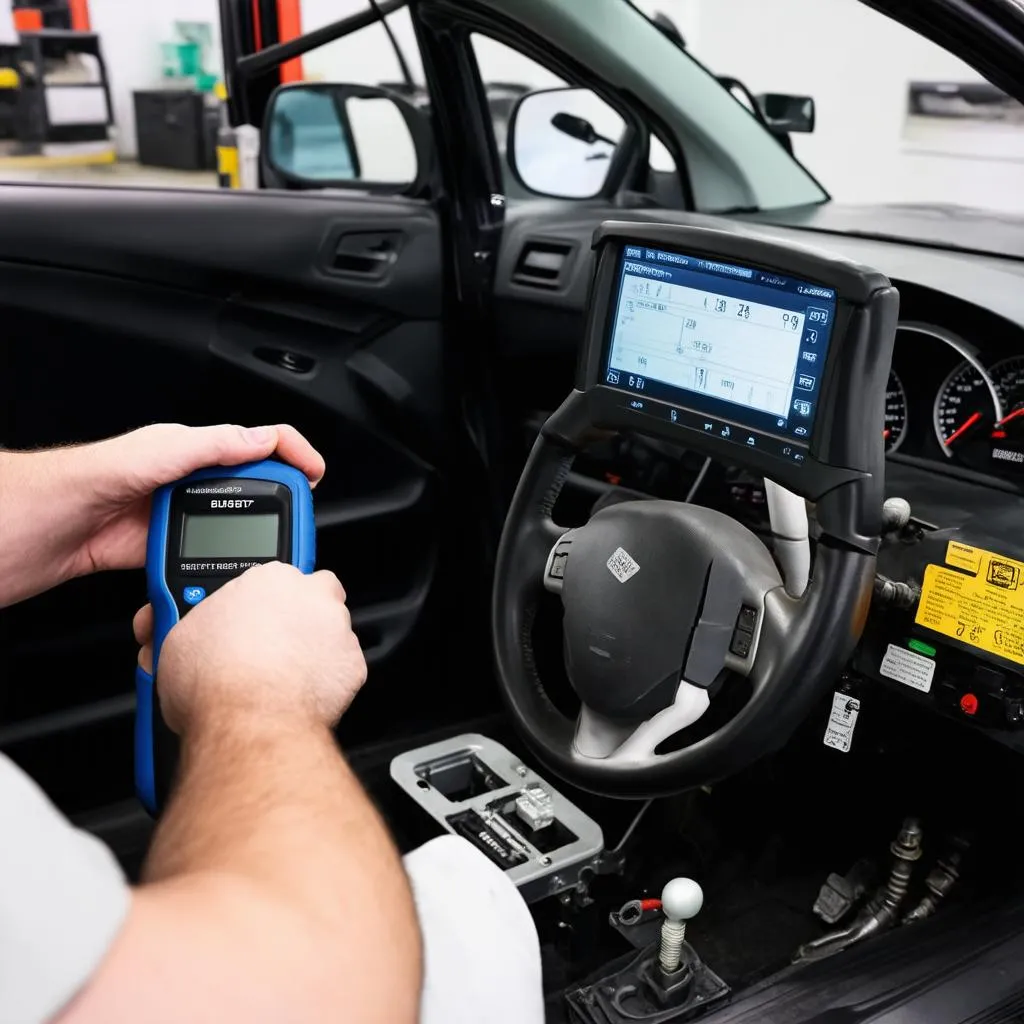Have you ever felt like your car was talking to you, but in a language you didn’t understand? That’s exactly how some drivers feel when they see an error code like P0010 pop up on their dashboard. This code might seem cryptic, but it’s actually a sign that your car’s engine is trying to communicate a specific issue.
What Does P0010 Obd Code Mean?
The P0010 Obd Code is a “Camshaft Position “A” – Timing Over-Advanced or System Performance (Bank 1)” code. Let’s break down what this means:
- OBD: On-Board Diagnostics – This is the system that monitors your car’s vital systems and reports any issues.
- P0010: This specific code points to a problem with the timing of the camshaft on the intake side (bank 1) of the engine.
- Camshaft: This is the part of your engine that controls the opening and closing of the valves, determining the timing of air and fuel delivery.
- Timing Over-Advanced: This means that the camshaft is not moving in sync with the crankshaft, causing the engine to be “over-advanced,” meaning the valves are opening and closing at the wrong time.
Imagine your car’s engine as an orchestra where each instrument plays at a specific time. When the camshaft is out of sync, it’s like a musician playing off-beat, disrupting the entire performance!
Why Does P0010 Code Occur?
There are several common reasons why you might see the P0010 code:
- Faulty Camshaft Position Sensor: This sensor provides information to the engine control unit (ECU) about the camshaft’s position. If this sensor is faulty, it could lead to inaccurate timing data.
- Damaged Camshaft Timing Chain or Belt: The timing chain or belt is what synchronizes the camshaft with the crankshaft. A stretched, broken, or damaged chain/belt can disrupt timing.
- Problems with the Variable Valve Timing (VVT) System: Some engines use a VVT system to adjust valve timing for optimal performance. A faulty VVT solenoid or actuator can cause timing issues.
- Oil Pressure Issues: Low oil pressure can affect the performance of the VVT system or damage the camshaft timing components.
- Faulty Engine Control Module (ECU): While less common, a faulty ECU can also lead to incorrect timing calculations and trigger the P0010 code.
What Should I Do if I See the P0010 Code?
If you see the P0010 code on your dashboard, don’t panic! But, don’t ignore it either. Here’s what you should do:
- Inspect the Engine: Look for any obvious signs of damage or wear on the timing chain/belt, oil leaks, or any loose connections.
- Check the Oil Level: Ensure that your engine oil level is adequate.
- Consult Your Owner’s Manual: Your owner’s manual will likely provide some basic troubleshooting steps for this code.
- Use a Diagnostic Scanner: A good OBD scanner can provide you with more detailed information about the P0010 code, helping you pinpoint the exact problem.
- Consult a Mechanic: For more serious issues, it’s always best to take your car to a qualified mechanic. They have the tools and expertise to properly diagnose the problem and make the necessary repairs.
How Can I Prevent the P0010 Code?
While you can’t always prevent all engine problems, here are some preventive measures you can take:
- Regular Oil Changes: Regular oil changes are essential for maintaining proper lubrication in your engine. This will help to reduce wear and tear on the camshaft timing components.
- Inspect Timing Belt/Chain: Follow your manufacturer’s recommendations for timing belt/chain replacement.
- Use High-Quality Parts: Using high-quality parts, like camshaft position sensors, can help to ensure that your engine is running smoothly.
- Don’t Ignore Warning Lights: Never ignore any warning lights on your dashboard, especially the “check engine” light.
What Are Some Related OBD Codes?
The P0010 code often accompanies other codes like P0011, P0012, and P0014, which also relate to camshaft timing issues. These codes might indicate a more complex problem requiring a professional diagnosis.
What Makes Are Common to Have P0010 Code?
While the P0010 code can appear in various vehicles, some makes are more commonly associated with this issue:
- Ford: Models like the Escape, Focus, and Mustang.
- Chevrolet: Models like the Silverado and Cruze.
- Honda: Models like the Accord and Civic.
- BMW: Models like the 3 Series and 5 Series.
- Audi: Models like the A4 and A6.
FAQs:
- Is P0010 Code Serious? The seriousness of the P0010 code depends on the underlying cause. While it can be fixed with a simple sensor replacement, in some cases, it could indicate a more significant problem with the camshaft timing system.
- Can I Drive With P0010 Code? It’s generally not recommended to drive for extended periods with the P0010 code. The engine timing is off, which can lead to reduced performance, rough idling, and even engine damage.
- How Much Does It Cost to Fix P0010 Code? The cost of fixing the P0010 code varies depending on the specific cause and your location. Replacing a camshaft position sensor is a relatively inexpensive fix, but repairing a damaged timing chain or belt can be more costly.
 camshaft sensor
camshaft sensor
Other OBD Codes and Automotive Resources
If you’re interested in learning more about OBD codes, visit our website, techcarusa.com, where you can find articles on:
- OBD Code P2096: https://techcarusa.com/obd-p2096/
- 2008 Pontiac G6 OBD P0010: https://techcarusa.com/2008-pontiac-g6-obd-p0010/
- 2013 Ford Escape OBD Codes: https://techcarusa.com/2013-ford-escape-obd/
 obd scanner
obd scanner
Need Help With Car Diagnostics?
We understand that understanding OBD codes can be confusing. That’s why our team of certified automotive experts is here to help. Contact us via WhatsApp at +84767531508 for 24/7 support.
Conclusion
The P0010 OBD code is a signal that your car’s engine timing is out of sync. Understanding the underlying cause of this code is essential for addressing the issue effectively. By following our tips and seeking professional help, you can get your car running smoothly again. Don’t hesitate to reach out if you have any questions or need assistance with car diagnostics.
Remember, keeping your car in good shape is a commitment to a safe and enjoyable driving experience.